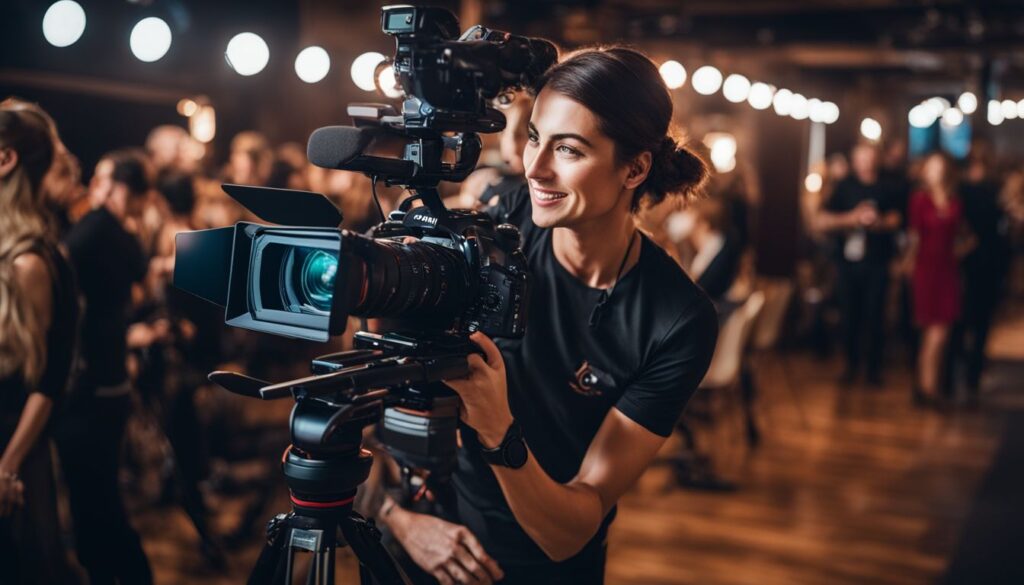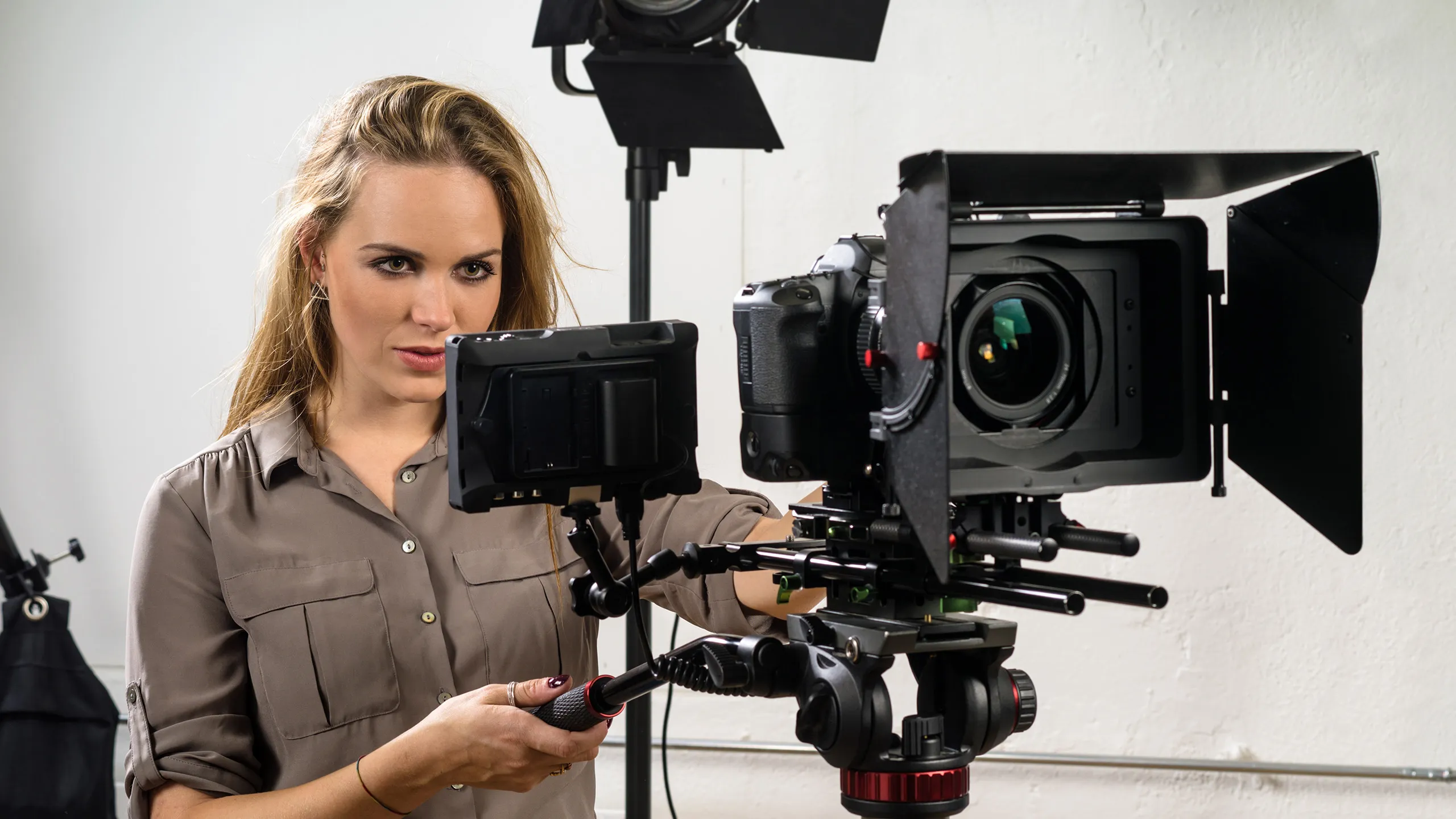Videography is the art and craft of capturing moving images and turning them into compelling visual stories. Whether you’re a beginner or an experienced filmmaker, this guide will help you master the essentials and explore advanced techniques.
What is Videography?
Videography involves capturing, editing, and producing video content for various purposes, such as films, marketing, events, and social media. Videography often emphasizes agility, versatility, and adaptability to smaller-scale productions unlike traditional filmmaking.
-
Essential Equipment
Investing in the right tools is crucial for high-quality videography.
Cameras
- DSLRs and Mirrorless Cameras: Versatile and offer excellent image quality.
- Cinema Cameras: For professional-grade productions.
- Action Cameras: Compact and great for adventurous or immersive footage.
- Smartphones: High-quality options for on-the-go shooting.
Lenses
- Wide-Angle: Great for landscapes and establishing shots.
- Prime Lenses: Excellent for low-light conditions and cinematic depth of field.
- Zoom Lenses: Flexible for various shot types.
Accessories
- Tripods/Gimbals: Stability for smooth footage.
- Microphones: Enhance audio quality (e.g., shotgun, lapel, or external recorders).
- Lighting Equipment: Key lights, softboxes, and reflectors for controlled lighting.
- Drones: Aerial shots for dynamic perspectives.
2. Pre-Production Planning
Preparation is key to successful videography.
Storyboarding
- Sketch or outline each shot to visualize your story.
Scripting
- Write a script to guide your narrative.
Location Scouting
- Visit locations beforehand to assess lighting, noise levels, and accessibility.
Gear Check
- Ensure all equipment is functional and batteries are charged.
3. Camera Settings
Understanding your camera is essential.
Resolution
- 1080p (Full HD): Standard for most projects.
- 4K/8K: For high-definition and future-proofing.
Frame Rate
- 24 fps: Cinematic look.
- 30 fps: Standard for web content.
- 60 fps and higher: For smooth motion or slow motion.
Shutter Speed
- Follow the 180-degree shutter rule (e.g., for 24 fps, use a shutter speed of 1/48 or 1/50).
ISO, Aperture, and White Balance
- Adjust ISO for light sensitivity, aperture for depth of field, and white balance for accurate colors.
4. Shooting Techniques
Composition
- Rule of Thirds: Divide the frame into thirds for balanced composition.
- Leading Lines: Use natural lines to direct viewer attention.
- Framing: Frame subjects creatively for dynamic visuals.
Camera Movement
- Pan/Tilt: Horizontal or vertical camera movement.
- Tracking/Dolly Shots: Moving with the subject.
- Zooms and Push-Ins: Add drama or focus.
Lighting
- Use three-point lighting (key, fill, and backlight) for professional setups.
- Exploit natural light and golden hours for outdoor shoots.
5. Audio Techniques
High-quality sound is as important as visuals.
- Use external microphones for better clarity.
- Monitor audio levels during recording.
- Record ambient sound for seamless transitions in editing.

6. Post-Production
Editing brings your footage to life.
Editing Software
- Beginner-Friendly: iMovie, Filmora.
- Professional: Adobe Premiere Pro, DaVinci Resolve, Final Cut Pro.
Key Editing Techniques
- Trim and organize clips.
- Add transitions and effects.
- Color grade to enhance mood and tone.
- Sync and mix audio for clarity.
7. Sharing and Distribution
Your audience defines how you share your content.
- Social Media: Optimize for platforms like Instagram, TikTok, and YouTube.
- Websites: Embed videos for professional presentations.
- Streaming Platforms: Distribute via Vimeo or similar platforms for higher quality.
8. Advanced Videography Tips
Mastering Cinematic Techniques
- Experiment with slow motion, time-lapses, and hyper-lapses.
- Incorporate visual storytelling elements like foreshadowing and symbolism.
Building a Portfolio
- Showcase diverse projects to attract clients or collaborators.
Staying Updated
- Follow industry trends and learn about new technologies, such as AI editing and virtual production.
9. Career and Monetization
Turn your passion into a profession:
- Freelancing: Cover events, weddings, or commercials.
- Content Creation: Start a YouTube channel or social media presence.
- Corporate Videography: Produce training videos or advertisements.
Videography is more professional With practice, creativity, and a dedication to storytelling, you can elevate your videography skills and create memorable, impactful content. The videographer must follow some techniques where they can visualize all in the audience.
Tags: 13 Creative Film and Video Editing Techniques, film and video editing, The Ultimate Guide To Videography, video editing, videographer
